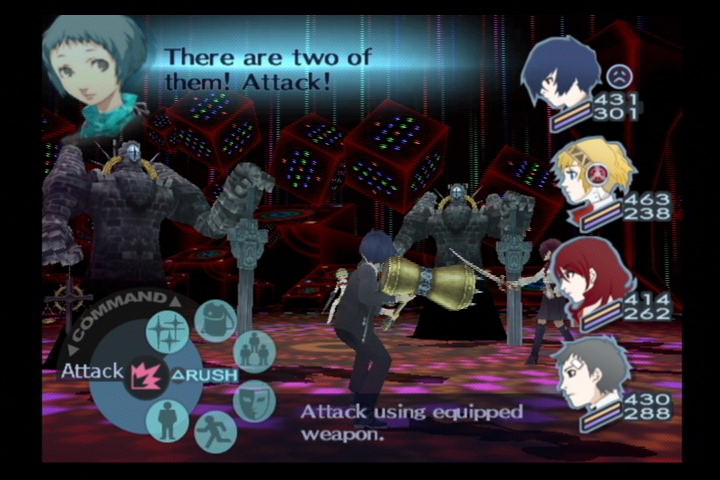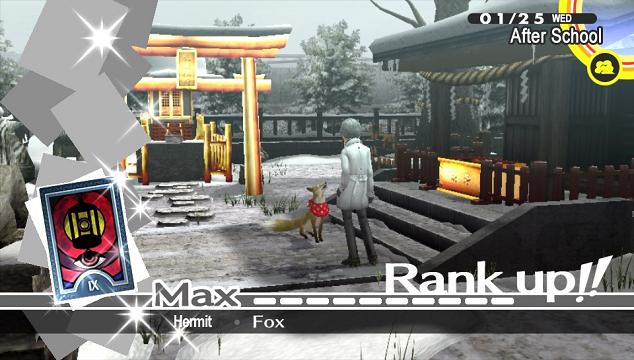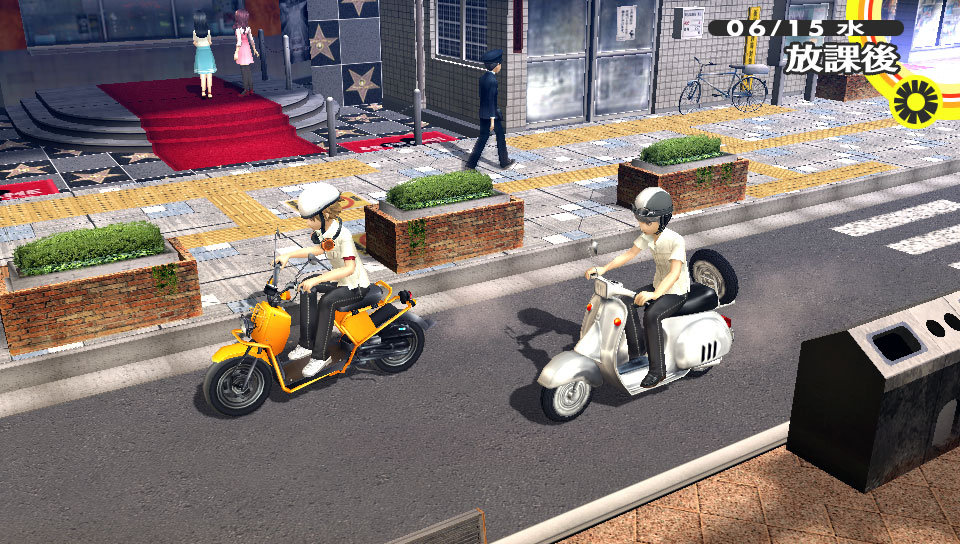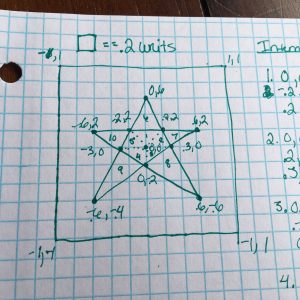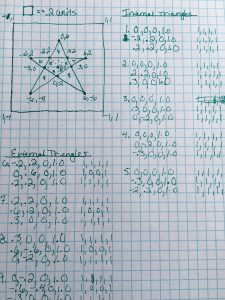I am doing a lot of travel at the beginning of this year. I just got back from GDC and I am flying to London for iOSCon in a few weeks. While I was at GDC I was staying with a friend who generously let me squat on her couch. Her couch was an hour away from San Francisco by train, so I knew between my flights and all the time spent on trains I needed to find something to keep me entertained and occupied.
I couldn’t work on the plane or the train because I am sensitive to motion sickness. That crossed out reading too. The best option I could think about was playing video games. I didn’t want to take the 3DS because it has terrible battery life, so that left the PS Vita.
I decided to replay Persona 3. I finished up Persona 3 a little over a year ago. It took me 75 hours to get through it the first time. I really wanted to replay it again, but I thought it was stupid to confine myself to one game, so I have spent the last year trying to find something I like as much as Persona 3. I haven’t found it yet. And yes, that includes the venerable Persona 4 Golden.
I know this is probably an unpopular opinion, but I like Persona 3 better than Persona 4. I was told by many people to play Persona 3 so I could appreciate how much better Persona 4 was. I held off on Persona 4 for a bit while looking for another game, but I couldn’t wait anymore and started playing it. I was disappointed.
I have been trying to figure out why I don’t like P4 as much as P3. Since I started replaying P3 I have a better understanding of what it is about P4 that I don’t like as well. Fair warning, I am only about 20 hours into P4, so it’s possible that some of my gripes might be rectified.
Dungeons
I like the main dungeon in P3, Tartarus, better than the mechanic in P4 where you enter the dungeon through the TV. I was a huge Buffy fan, so the idea that your school is the base of all evil is a perfect metaphor for being a teenager.
I liked that there was an explanation about why the Shadows show up at the school. The Shadows are a result of an accident at the Kurijo Group. Mitsuru’s father was responsible for the accident. Yukari’s father died in that accident. It felt like people were being drawn to this problem because of their pasts.
In P4, you enter the dungeon through the TV. There seems to be no explanation about why these people in this one town are able to enter the TV to go fight shadows. It’s a small town and people just sort of happen to be there. There was no grand plan to right the wrongs of the past. There was an epic component missing from the grand scheme of things. I get that it’s supposed to be a less heavy and more fun iteration of Persona, but if you’re delving into Jungian psychology and the collective unconscious, I did appreciate the epic scope provided by P3.
I also really liked that the students in P3 live in the dorms and there don’t seem to be any grown ups around. It really scratched a mental itch to get to have an immersive Japanese high school experience with all its stereotypes. Playing a game about a bunch of kids in a small town who live with their parents reminded me too much of my own real life to be a fun escape.
Combat
I don’t really like the tweaks to the combat system in P4. I don’t know why, but it’s difficult to see what various Shadows are weak to. In P3 I can directly control all of my players and get a good overview of what each shadow is weak to. When I do combat in P4 I don’t control my players and things happen so chaotically that I don’t actually know what moves my players made against the Shadows.
I also miss having the portals on various levels to take you back to the entrance in P3. In P4 you need to hold onto a consumable item that you must use to get back to the entrance.
All in all, I just found the combat in P3 to be more intuitive than in P4.
Quests
One component in both P3 and P4 is that you go on quests and receive rewards. The quests are a side component of the main gameplay.
In P3, you receive a list of quests from Elizabeth/Theo. They’re all neatly gathered in one place. You get a crazy response from Elizabeth. It’s fun to complete the quest just to hear what she is going to say. A lot of the quests can be completed just by doing dungeon crawling. They’re not that hard to figure out.
In P4, your quests are spread all over the place. Unless you have an online guide, it’s practically impossible to find and complete every single quest. One is from a teacher wearing Egyptian wear hiding behind a corner. It’s difficult to keep track of all the quests and how to complete them. I believe some of the quests advance a social link, which makes it vital that you complete some of them.
I wound up playing through bits of P4 on the plane when there was a glitch on my memory card. I bombed nearly everything I did in the game because nothing was intuitive. I couldn’t look up the answers online and I failed at everything. If this was a normal game where dying is a way of learning, that would be one thing. Playing this game is an 80 hour commitment and I don’t want to shoot myself in the foot by screwing up all of the quests when I want to play for a few hours when I don’t have access to the internet.
I get stressed out trying to keep track of the quests and so I usually wind up ignoring them. Sometimes I will look something up and find there are ten things I missed. I get that some people might really enjoy just how many side quests there are and how much there is to do, but I don’t like the idea that I have to sit down with an online guide to accomplish everything happening in the game.
Skills
Going along with having too much chaos with the quests is expanding the skills requirements.
In P3, you have three skills you must max out: Academics, Charm, and Courage. The first time I played through I didn’t understand that you had to max out all three of these. I focused on Academics because I knew we had midterms to study for. This lack of understanding bit me towards the end of the game as there were several social links I never finished because I didn’t have the requisite skill level to begin the social link.
P4 doubles the number of skills to six. In addition to that, it adds gardening and fishing and scooter riding and… It’s difficult to grasp the advantages of leveling up one skill over another. In addition to these skills you have to kill Shadows and level up your social links.
I get that part of the appeal of P4 is that there is more of everything, but I find it personally overwhelming. I find it difficult to know what to do on any given day and I feel like I am playing the game wrong because I don’t know what my character is supposed to do. I have major FOMO no matter what I do.
Female Protagonist
The last bit I would like to bring up is my appreciation that the portable version of P3 has the option to play as a female.
It shouldn’t make that much of a difference, but playing as a female character completely changes the feel of the game. The first time I played through as a female character I found Junpei to be creepy because I thought he was hitting on me rather than being friendly. This time around, knowing that he is not an option for a love path, I am really enjoying my character’s friendship with him.
You get to have the option to use Elizabeth’s brother Theo as your liaison with the Velvet Room. It’s fun getting another character to interact with.
Right now I am playing another game, Rune Factory 2: A Fantasy Harvest Moon. That game consists of two generations, where most of the main gameplay happens in the second generation. In that generation, you have the option to play as either male or female, but you don’t get that option in the first generation. Your main goal in the first generation is to find a girl to marry so you can knock her up with what will be your character in the second generation.
Playing as a boy puts me in a position I don’t like being in. I know the only goal I have as my character is to find the mother of my child. The characters are paper thin because they’re not really the point of the game, so I find myself asking questions I don’t like. Do I marry the girl the game wants me to marry who will never marry anyone else if I don’t marry her? Do I steal the shy girl who talks through her doll from her boyfriend because he’s an asshole? Do I try to marry the rich girl because she’s the hardest one to marry and thus prove my status? It’s a really creepy and superficial way of looking at things and it worries me that this is how boys see relationships in real life. Like, we’re not people. We’re various status symbols or a means to an end. Playing like this really depresses and upsets me. I know logically that it doesn’t make a whole lot of sense to give deep and complex personalities to something with such shallow gameplay, but having to think that way really upsets me.
P4 was remade for the Vita as Persona 4 Golden. They made a fighting game with the Persona 4 cast, along with a dancing game. These characters have been in so many games and done so much fan service that it really bothers me that they figured it just wasn’t worth it to add a female protagonist. Being able to play as a female is much more comfortable and it’s an indication that the creators care about making a nice game for everyone and not just the boys.
Conclusion
I will admit that the story and characters in P4 are better than P3. I know that the characters are a vitally important part of the game, but it’s still a game. It’s not a visual novel. It’s nice to do well in the game and constantly being confused as to what to do. In my opinion, P4 is too much of a good thing. I have preordered P5, so we’ll see how that one stacks up. For now, P3 for the win!


